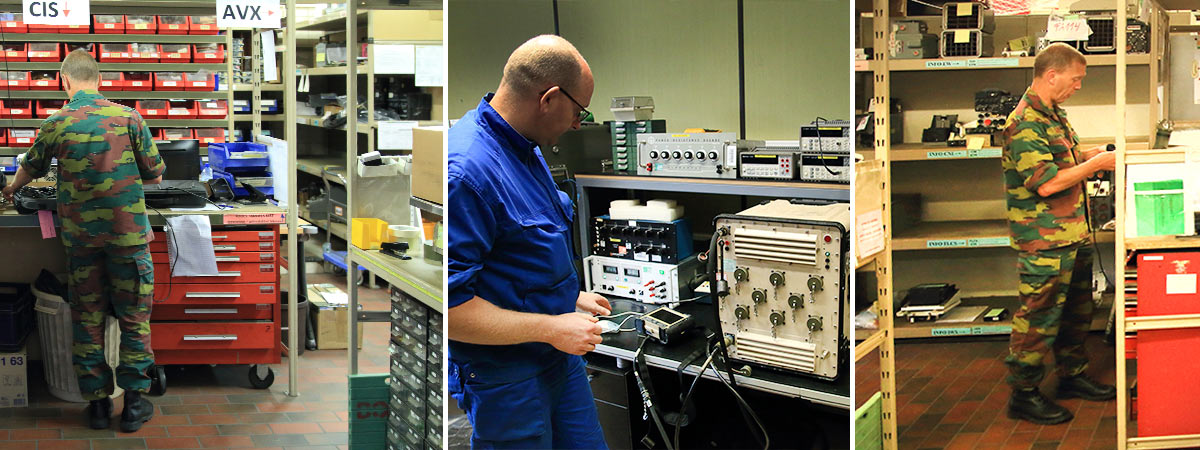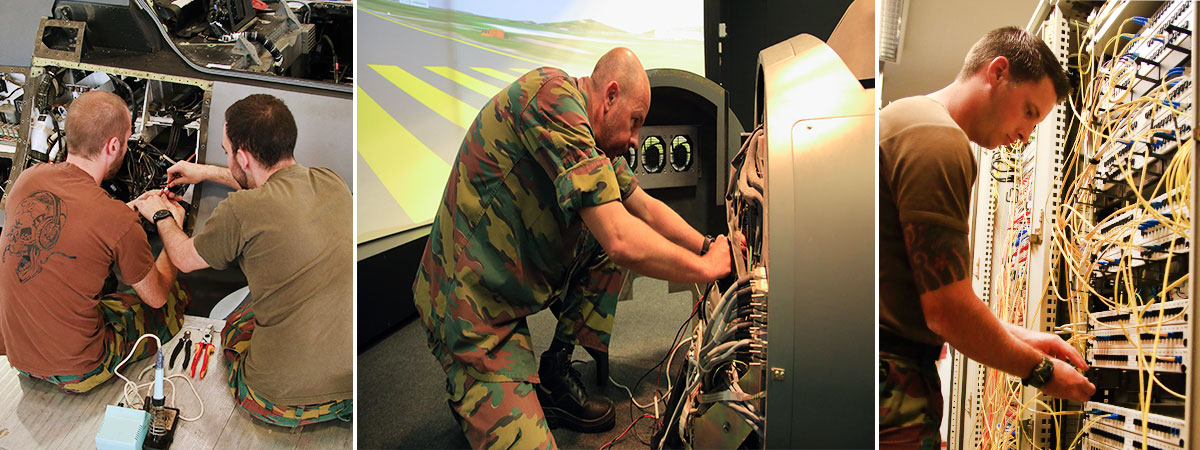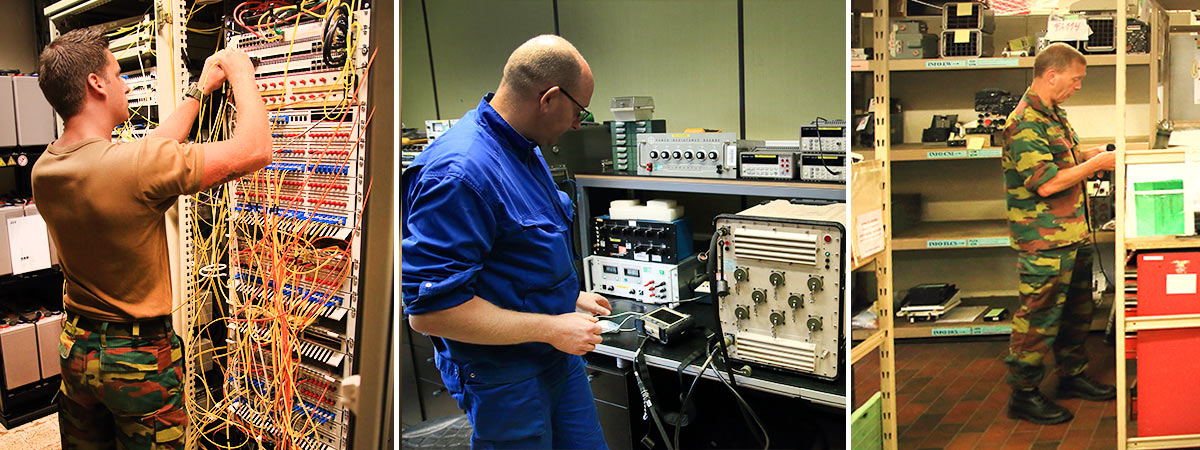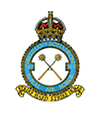The Electronics and Telecommunication Squadron (E&T) is assigned with specific tasks, technical and logistics management and equipment maintenance in many domains
- Electronic F-16 devices/systems
- Flight simulator
- Means of telecommunication (Ground to ground, ground to air, air to air)
- Navigation tools such as GPS and similar aircraft systems
- Computer systems: computer and support systems to allow technicians to do aircraft maintenance
- Cryptographic equipment: equipment to encrypt and send sensitive information
- Audio, visual and audiovisual equipment
- Test and measuring devices to test aircraft sensors and equipment
- Exploitation of means of communication in the transmission spectrum
To fulfill these tasks, the E&T Squadron is divided into three flights and a central depot/Bureau Metrology:
- Flight Avionics (Avx)
- Flight Communication and Information systems (CIS)
- Flight Support
- Depot E&T + Bureau Metrology (BMT)
The task of the flight Avx is to ensure the maintenance and support of the electronic F-16 systems as well as the technical and logistics management.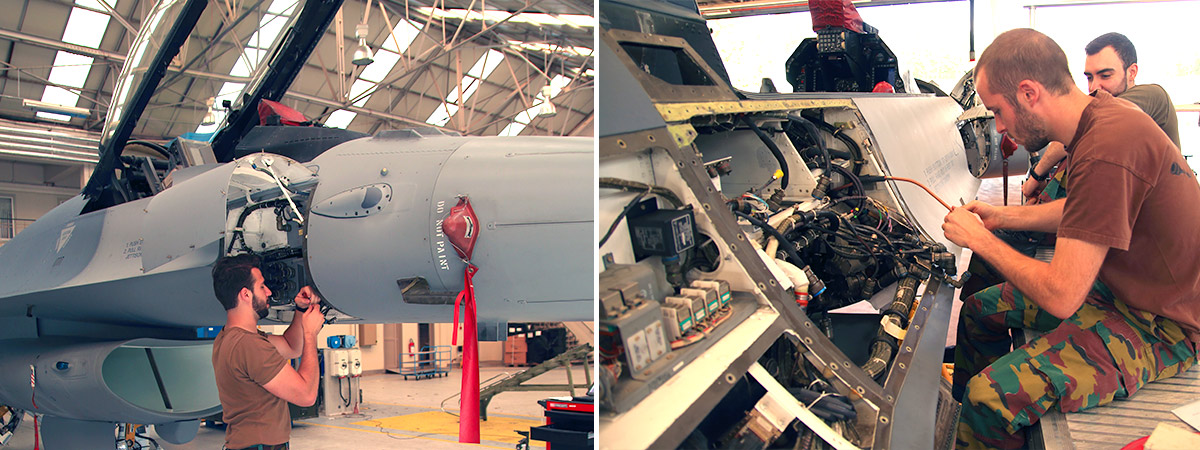
In order to do so, the flight Avx is subdivided into:
- Intervention: a Bureau Exploitation (BEx) that coordinates the different tasks and four sections responsible for repairs on the F-16 fleet as well as repairs to electronic F-16 devices.
- Bureau Exploitation (BEx)
- Electronic Warfare section (EW): 360° aircraft protection against enemy threats with eg an ALQ-131 (jammer) and the KRP detection device. Firing of Chaff and Flares protects the aircraft against hostile missiles.
- Communication, Navigation and Identification section (CNI): aircraft communication means (UHF/VHF radio and satellite communication) and navigation tools (eg GPS, INS and Beacons like TACAN)
- Flight Controls section (FLCS): maintenance of primary aircraft systems, namely the movements of the aileron by Hands on Throttle and Stick (HOTAS)
- Integrated Weapon Systems section (IWS): reconnaissance of targets and delivery of weapons on target which is made possible by a collaboration of sensors and systems like the Fire Control Radar, the SNIPER Targeting pod, Helmet Mounted Cueing System (HMCS), Heads-Up Display (HUD) etc…
- Not-Intervention F-16: supporting sections of the Intervention sections.
- Mission Support Systems section (MS3): maintenance of all hardware/software necessary to plan and and extract data to debrief a flight. Thanks to special software programs, it is possible to review every second of the flight with the means the pilot had available during his flight (sound, Video and GPS data)
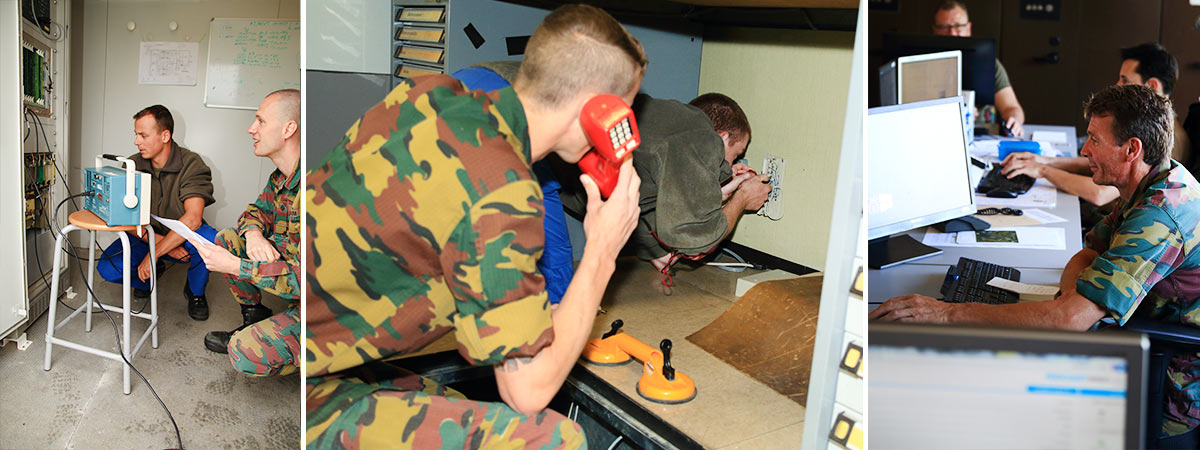
The task of the Flight CIS is to manage all ground communication and information systems. The command structure is build up with a commander and also a separate BEx to coordinate all different tasks. Furthermore, this flight is subdivided into:
- Information and Communication Technology section (ICT): maintenance of the entire network, software and hardware ground computer systems. Eg ICAROS, Intrusion Detection system and BlueNET (survey of radar images)
- Communication Navigation and Surveillance section (CNS): maintenance of ground to air radio and navigation systems. Eg for communication systems are Air Defence Radio, TRS/TETRA. Eg for navigation tools are PAR, ILS, TACAN.
- Crypto Centre: maintenance of F-16 cryptographic equipment ensuring the secure sound and data transmissions between aircraft or between air to ground systems.
- Cel Data: programmers and database administrators developing local ILIAS queries and reports for the 10TH Tactical Wing as well as for the entire Belgian Defence.
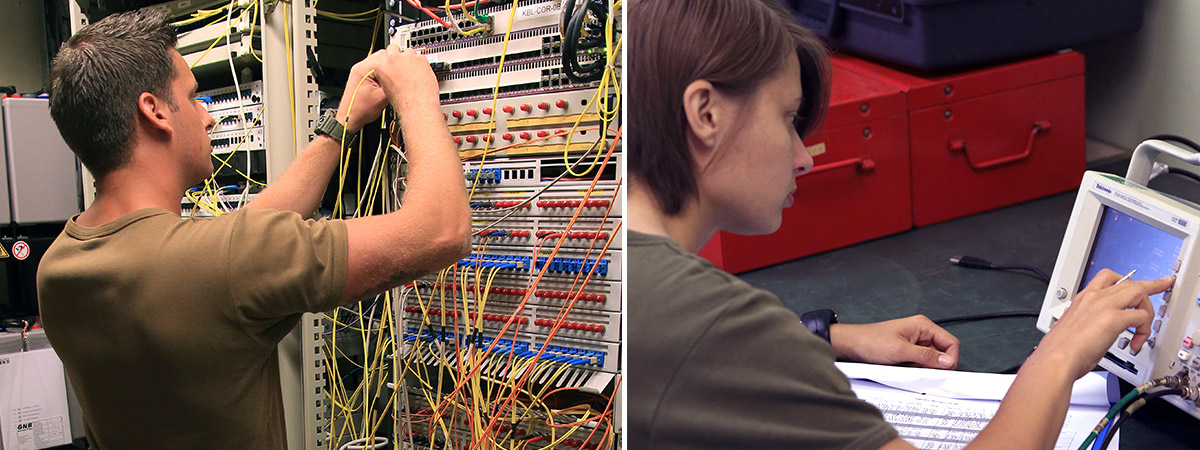
The task of the Flight Support consists of non-direct aircraft related tasks, however of essential meaning to support a squadron like for instance vehicle maintenance, hangar maintenance, the supply of the canteens and other daily operations of a squadron as well as the coordination of social activities.
The E&T/BMT storage is not a separate flight, but under direct hierarchy of the Squadron Commander. It manages the squadron’s consumables. The BMT section is responsible for the calibration of all measuring and testing devices.
